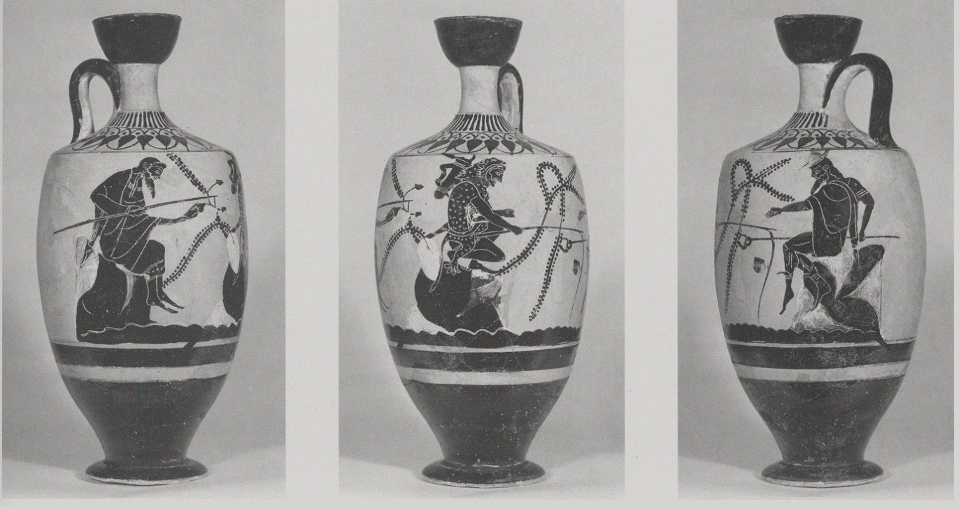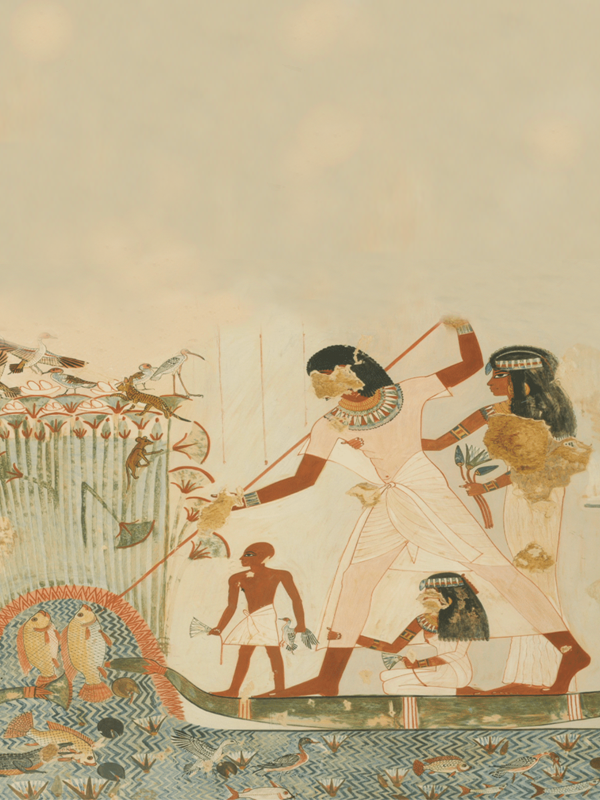
Fishing in ancient Greece
Fishing in ancient Greece

In the history of Greek antiquity, fishing with a line or harpoon, has developed mainly in the Aegean Sea which bathes all the coasts of the country.
In ancient Greece, it was mainly in the sea that fishing was developed. There are two main reasons for this: with its indented coasts, bathed by a sea where the most delicious fish abound, it is quite natural that this people of sailors, turned to this food, but above all the freshwater fish resources in this country with a very marked Mediterranean climate, have always been scarce, most of the rivers drying up during the summer.
In the Iliad or the Odyssey, Homer makes little reference to fishing or fishermen, and only as a parallel to war. Thus is described the end of Thestor: “Patroclus struck him with his spear on the right cheek, and the brass passed through the teeth; and as he brought him back, he pulled the man from the chariot. As the fisherman, sitting on the top of a high overhanging rock, draws out of the sea a great fish with a bright hook, so Patroclus, with his bright spear, removed Thestor, with his mouth gaping, from the chariot.”
While we have said that among the Egyptians, at least among the noble castes (see the authentic anecdote of Cleopatra and Antony fishing in the Nile), angling could be considered as an amusement or a leisure activity, in Greek antiquity this activity, whether it was practiced with a line or with nets, was reserved for the lower castes or for slaves. This activity was then purely alimentary and commercial. On the other hand, many authors, including Homer, relate the hunting exploits of Greek heroes. Hercules, or rather Heracles, killed with his bare hands in the snow the gigantic boar of Erymanthe in Arcadia, which terrified the surrounding populations. It is also with bare hands that he will strangle the lion of Nemea which terrorized the herds and the shepherds of the Peloponnese, which will constitute the first of his twelve works.
Achilles and Ulysses also practiced hunting, a noble and virile activity that served as training for war. But nowhere, to our knowledge, does Homer, in his epic poems of the Iliad and the Odyssey, describe them fishing, nor does he explicitly talk about fish.

Lecythes or funerary vases with a white background, decorated with scenes of peaches, used to store perfumed oil, intended for the care of the body of the deceased, in ancient Greece.
In his History of Animals, Aristotle describes 110 species of marine fish.
Fishing in ancient Greece. It is only about four centuries later, in 350/380 BC, that the Greek philosopher and naturalist Aristotle will describe in his History of Animals, one hundred and ten species of fish, mostly marine. If there is no doubt, therefore, that the ancient Greeks knew the fish that abounded in the Aegean Sea, as well as the lines, gaffs and hooks, to capture them, these devices were used, essentially at sea, only for food needs and not for recreational purposes. Contrary to the eating habits of the Romans, who were fond of marine fish, the ancient Greeks did not seem to appreciate them too much, preferring by far beef, mutton or goat meat, or even game. This is all the more astonishing since five or six centuries BC, at the time of the Greek fabulist Aesop, Byzantium was an ancient Greek city, capital of Thrace, located at the entrance of the Bosphorus strait. And until recently, let’s say the middle of the last century, Byzantium, which has since become Constantinople or Istanbul, owed its nickname of Golden Horn in part to the phenomenal fishing of large bluefin tuna (Thunnus thynnus) that was done there since certainly prehistoric times. Indeed, in order to pass from the Mediterranean to the Black Sea and vice versa for their return migration, the schools of giant tunas had to pass close to the land because of the strength of the currents in the strait, where it was relatively easy to intercept them either with harpoons or with installations of coarse fixed nets of the trap type.

Fresco at Akcrotiti in the Cyclades....The fishes here very identifiable are Coryphenes, always present in the Aegean Sea and which return in Corsica....
The first artificial fly ever described comes from Macedonia.

Hippouros, the first artificial fly ever described: a red wool body and two "wax" colored feathers taken from the neck of a rooster.
A body of red wool and two “wax” colored feathers taken from the neck of a rooster, the whole wrapped around a bronze hook. This very simple description of an artificial fly for fishing in ancient Greece, perhaps the first artificial fly, or at least the first of which we have literary knowledge, is reported by Claudius Aelianus, known as the sophist, who taught, among other things, the Greek language, zoology and rhetoric in Rome in the second century of the Christian era. In book XV, first chapter, of his De Natura Animalium, he tells us that he had seen on the banks of the Astraeus, a river in Macedonia (then a Roman province), fishermen whipping the water with rods and lines six feet long, and using this imitation of an insect called Hippouros, resembling a tiny butterfly with very fragile wings, to catch fish whose “coat is spotted with colored dots”. Was this fly used as a “dry” or “wet” fly? Surely a bit of both! Aelien does not specify it, but we can imagine that before drowning (heavy bronze hook and woolen body), this fly that some fishermen perhaps greased, could also be dredged or “jumped” on the surface. Whatever the case, we have with this unequivocal testimony, the proof that an artificial fly was used nearly two thousand years ago, to capture fish which could only be (spotted dress) trout, abundant even today in the rivers of Macedonia. As for the flies, whose wings, says Aelian, “withered as soon as they were touched”, they were undoubtedly fragile ephemerals. The description of the imitation of the fly made with two feathers of cock of color “wax” certainly meant to represent the wings of the insect, makes, it either, no doubt.




